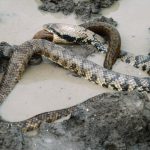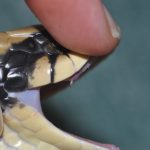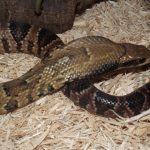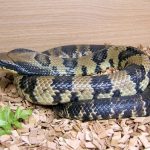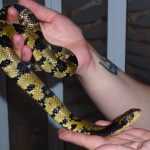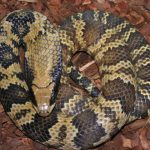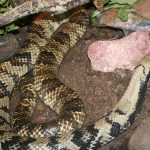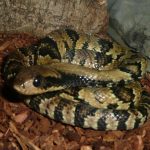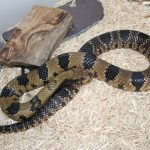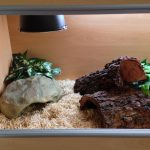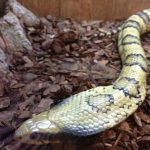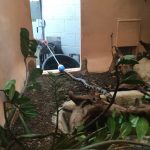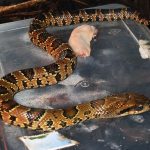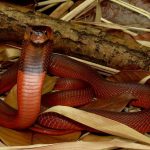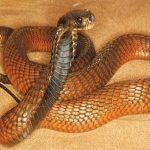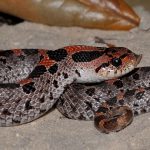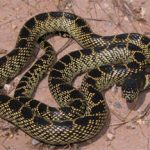False Water Cobra
False water cobras are large, rear-fanged species of snakes belonging to the colubrid family, found in South America. There are no recognized subspecies of this species. They derived their name from exhibiting the cobra hood when threatened and also they are not true species of cobra, hence the name false cobra. The species is fast moving and diurnal.
| Kingdom | Animalia |
| Phylum | Chordata |
| Subphylum | Vertebrata |
| Class | Reptilia |
| Order | Squamata |
| Suborder | Serpentes |
| Family | Colubridae |
| Subfamily | Xenodontinae |
| Genus | Hydrodynastes |
| Scientific Name | Hydrodynastes gigas |
| Other Names | Brazilian Smooth Snake, False Cobra, South American Water Cobra |
| Length | Around 2m; some specimens may exceed 3m |
| Weight | Around 10lbs |
| Color | Olive green or brown background color with dark bands and spots turning more darker towards the tail; yellow or brown ventral scales with spotted dark streaks that form into three dotted lines which tend to combine towards the tail |
| Distribution | Eastern Bolivia, southern Brazil, Paraguay, Argentina |
| Habitat | Wet, humid areas, and marshlands in the tropical rainforests |
| Diet | Fish, amphibians, rodents, small mammals, birds, other reptiles |
| Hibernation Fact | Undergoes brumation |
| Predators | Juveniles fall prey to Amazon horned frogs and some birds of prey |
| Venom Fact | Venomous |
| Breeding Season | Spring |
| Mode of Reproduction | Oviparous (egg laying) |
| Clutch Size | 8 to 16 |
| Incubation Period | 60 to 75 days |
| Reproductive Age | Males: 2 years of age Females: 4 to 5 years of age |
| Average Lifespan | 15 or more years |
| IUCN Conservation Status | Not Listed |
False Water Cobra Pictures Gallery
- Brazilian Smooth Snake
- False Water Cobra Fangs
- False Water Cobra Hood
- False Water Cobra Images
- False Water Cobra Photos
- False Water Cobra Pictures
- False Water Cobra Venom
- False Water Cobra
- False Water Cobras
- Hydrodynastes Gigas
- False Water Cobra Tank
- False Water Cobra Care Sheet
- False Water Cobra Care
- False Water Cobra Enclosure
- False Water Cobra Size
Published on October 8th 2016 by staff under Snakes. Article was last reviewed on 20th September 2023.


